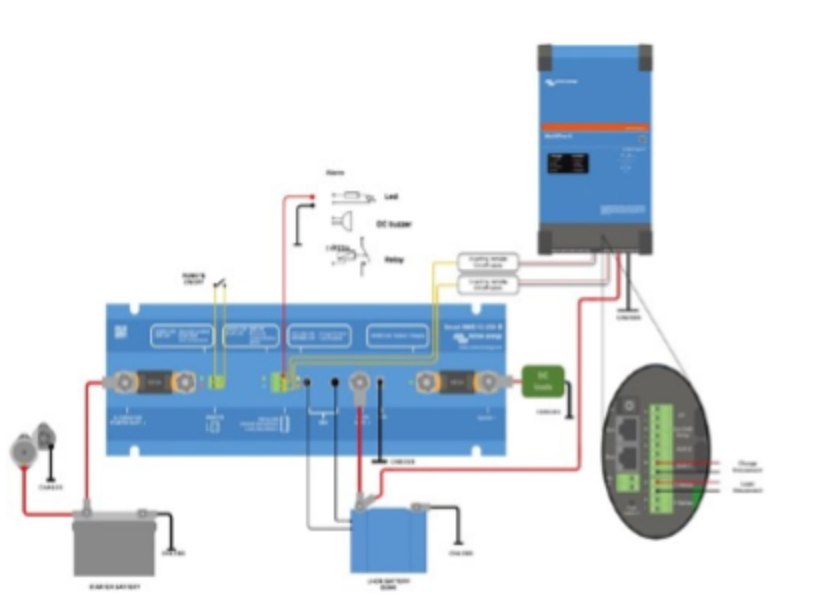Looking at the datasheet for Smart BMS 12 200, the start battery and alternator are connected to the Alternator Start Battery + port and it is supposed to forward current to the Lithium battery port and System + only when 13 V have been reached.
But then... what happen to that poor battery since as soon as 13 V is reached, there is an alternator that will send the bulk/absorption voltage to both battery which are different. The start battery might be a Victron AGM. They have fairly the same charge profile:
Victron AGM charge profile @25C
Bulk
Absorbtion 14.2 – 14.6
Float 13.5 – 13.8
Victron Lithium charge profile (not temperature related)
Victron Lithium charge profile
Bulk 14-15
Absorbtion 14.2
Float 13.5
Let's suppose the alternator is a Balmar of 250 Amp and the regulator is programmable, and that the AGM are almost full already - they have just started the engine. And assume the basic charging profile will then be adapted for the Lithium. But lets remember that we have 2 different battery chemistry thus interconnected.
For a small daily charge which will not be complete, lets say an hour of alternator or a day of solar panel i don't think there is a problem with the AGM being exposed to 14.2 volt for a long time.
But then it is recommended to fully charge the Lithium at least once a week. So then the AGM will be exposed to 14.2 for many hours. The voltage is 14.2 but the current will be null since the resistance of the Lithium is far less than the AGM. But nevertheless.
What would be Victron guidance for use of both battery chemistry on the Smart BMS given the requirement of a long complete charge of the Lithium that have the risk to expose the Victron AGM to longer periof of high voltage ?

